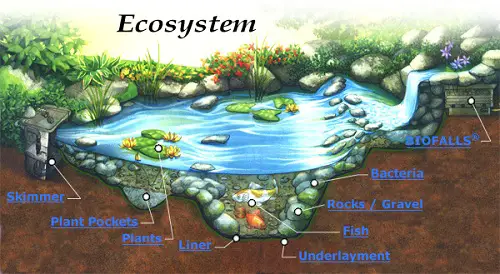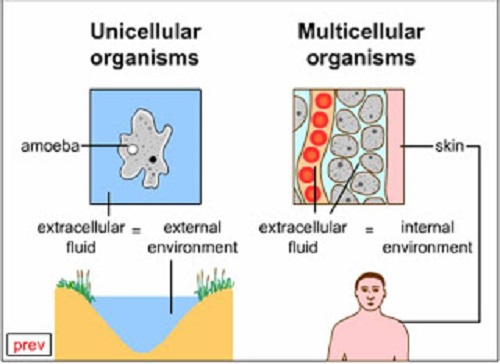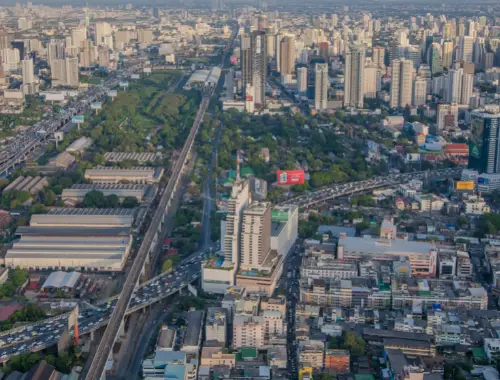
Ecosystems and communities are two fundamental concepts in ecology that collectively shape the intricate tapestry of life on Earth. While distinct in their definitions, these terms share several similarities, highlighting the interconnectedness and interdependence that characterizes the natural world.

Interconnected Relationships:
Both ecosystems and communities thrive on the relationships between organisms. In an ecosystem, organisms interact with each other and their physical environment, creating a complex network of dependencies. Similarly, communities are formed by populations of different species coexisting and interacting within a defined habitat.
Biotic and Abiotic Components:
Ecosystems and communities comprise both biotic (living) and abiotic (non-living) components. The living organisms in a community and their interactions form the biotic components, while the physical environment, including soil, water, and climate, constitutes the abiotic components. This integration of living and non-living elements underscores the dynamic balance within both ecosystems and communities.
Energy Flow and Nutrient Cycling:
Energy flow and nutrient cycling are vital processes in both ecosystems and communities. In ecosystems, energy flows through trophic levels, from producers to consumers and decomposers, sustaining life. Communities, too, rely on nutrient cycling as organisms interact, ensuring a continuous exchange of essential elements for survival.
Adaptations for Survival:
Organisms in both ecosystems and communities evolve and adapt to their environments for survival. Whether through natural selection or ecological interactions, the ability of species to adapt to changing conditions is crucial for the stability and resilience of ecosystems and communities.
This table summarizes the key similarities between ecosystems and communities, emphasizing their shared characteristics in ecological systems.
| Aspect | Ecosystem | Community |
|---|---|---|
| Definition | A biological community of interacting organisms and their physical environment. | A group of populations of different species living in the same area and interacting with each other. |
| Interconnected Relationships | Organisms interact with each other and the physical environment, forming a complex web of dependencies. | Populations of different species coexist and interact within a defined habitat, establishing relationships. |
| Biotic Components | Comprises living organisms, including producers, consumers, and decomposers. | Formed by the populations of various species cohabiting within the same geographical area. |
| Abiotic Components | Includes non-living elements like soil, water, climate, and other physical factors. | The physical environment, such as soil composition, climate, and geographical features. |
| Energy Flow | Energy flows through trophic levels, sustaining life and supporting ecological processes. | Organisms interact, and energy is transferred through feeding relationships within the community. |
| Nutrient Cycling | Involves the continuous exchange of essential elements among organisms in the ecosystem. | Organisms contribute to nutrient cycling through processes like decomposition and nutrient uptake. |
| Adaptations for Survival | Organisms evolve and adapt to environmental conditions for survival and reproduction. | Species adapt to the community’s specific conditions, leading to the development of unique traits. |
The similarities between ecosystems and communities underscore the intricate web of life that binds them together. Recognizing these parallels enhances our understanding of the delicate balance that sustains biodiversity and ecological harmony. As stewards of the planet, it is imperative that we appreciate these similarities to foster responsible environmental management and ensure the preservation of Earth’s diverse ecosystems and communities.
Q: What is the main similarity between ecosystems and communities?
A: The primary similarity is the presence of interacting living organisms. Both ecosystems and communities involve different species coexisting and influencing each other within a specific habitat.
Q: How do ecosystems and communities demonstrate interconnected relationships?
A: In ecosystems, organisms interact with both living and non-living elements, creating a complex network of dependencies. Similarly, communities are formed by populations of different species coexisting and interacting within a defined habitat, showcasing intricate relationships.
Q: What components contribute to the similarities between ecosystems and communities?
A: Both ecosystems and communities comprise biotic (living) and abiotic (non-living) components. The living organisms interact within a physical environment, emphasizing the interconnectedness of these components.
Q: How do energy flow and nutrient cycling play a role in both ecosystems and communities?
A: Both ecosystems and communities rely on energy flow and nutrient cycling. In ecosystems, energy flows through trophic levels, sustaining life, while communities involve continuous nutrient exchange through ecological interactions.
Q: Do organisms in ecosystems and communities exhibit adaptations for survival?
A: Yes, organisms in both ecosystems and communities evolve and adapt to their respective environments. Whether through natural selection or ecological interactions, adaptation is crucial for the stability and resilience of these ecological systems.
Q: What is the significance of recognizing the similarities between ecosystems and communities?
A: Recognizing these similarities enhances our understanding of the delicate balance that sustains biodiversity and ecological harmony. It fosters responsible environmental management, ensuring the preservation of Earth’s diverse ecosystems and communities.
Q: Are there any recommended readings to delve deeper into the similarities between ecosystems and communities?
A: Certainly! Some recommended readings include “Fundamentals of Ecology” by Eugene P. Odum and “Living in the Environment” by G. Tyler Miller and Scott Spoolman. These texts provide comprehensive insights into ecological principles and the interconnected nature of ecosystems and communities.
Q: How do ecosystems and communities contribute to the balance of nature?
A: Ecosystems and communities contribute to the balance of nature by maintaining ecological stability. Ecosystems ensure a balance in nutrient cycling and energy flow, while communities exhibit a balance through interactions between different species, preventing the dominance of one species over another.
Q: Can you provide examples of adaptations seen in both ecosystems and communities?
A: Certainly! In ecosystems, plants may develop specific adaptations to thrive in particular climates, while animals evolve features for efficient predation or protection. In communities, species may develop behavioral adaptations to coexist peacefully or competitive traits to secure resources within the shared habitat.
Q: How do disturbances affect ecosystems and communities similarly?
A: Disturbances, such as natural disasters or human activities, impact both ecosystems and communities similarly by influencing the balance and composition of species. They can lead to shifts in population dynamics, changes in biodiversity, and alterations in the physical environment, highlighting the shared vulnerability of these ecological systems.
Q: Are there specific case studies illustrating the similarities between ecosystems and communities?
A: Yes, case studies like the Yellowstone National Park ecosystem restoration and studies on coral reef communities demonstrate the interconnectedness of species, the importance of biodiversity, and the role of various organisms in maintaining the health of both ecosystems and communities.
Q: How do human activities affect the similarities between ecosystems and communities?
A: Human activities can disrupt the balance in both ecosystems and communities. Deforestation, pollution, and urbanization impact ecosystems by altering habitats, while over-exploitation and introduction of invasive species affect the dynamics of communities. Recognizing these impacts is crucial for sustainable environmental practices.
Q: How do ecosystems and communities respond to environmental changes or climate variations?
A: Both ecosystems and communities exhibit dynamic responses to environmental changes. Ecosystems may experience shifts in vegetation and wildlife distribution, while communities adapt through changes in species composition or migration patterns. These responses underscore the adaptability and resilience of ecological systems.
Q: Can you elaborate on the role of keystone species in maintaining similarities between ecosystems and communities?
A: Keystone species, whether in ecosystems or communities, play a critical role in maintaining balance. They have disproportionate effects on their environment or community, influencing the abundance and diversity of other species. Their presence or absence can significantly impact the overall health and stability of both ecological systems.
Q: Are there instances where conservation efforts for ecosystems align with the preservation of communities?
A: Absolutely. Conservation efforts often focus on preserving entire ecosystems, recognizing that protecting habitats benefits the communities of species within them. By safeguarding ecosystems, we inherently contribute to the conservation of diverse communities, promoting biodiversity and ecological integrity.
Q: How do ecological succession processes in ecosystems relate to the development and evolution of communities?
A: Ecological succession, where ecosystems undergo predictable changes over time, is closely linked to the development of communities. As ecosystems evolve, the composition of species within communities also changes. Understanding succession helps reveal the interconnected patterns of species establishment and replacement.
Q: In what ways do ecosystems and communities contribute to ecosystem services and human well-being?
A: Ecosystems provide services like clean air, water purification, and climate regulation, contributing to human well-being. Similarly, communities of plants and animals contribute to agriculture, medicine, and cultural values, showcasing the interconnected benefits that both ecosystems and communities offer to humanity.
Q: How do disturbances, such as wildfires or floods, impact the recovery and resilience of both ecosystems and communities?
A: Disturbances can have varying effects on recovery and resilience. While some species may be negatively impacted, others may thrive in post-disturbance conditions. The resilience of ecosystems and communities is evident in their ability to adapt and recover over time, often leading to renewed biodiversity and ecological balance.
Q: Can you explain the role of feedback loops in maintaining equilibrium within ecosystems and communities?
A: Feedback loops are essential in maintaining equilibrium. Positive feedback loops can amplify changes, leading to dynamic shifts, while negative feedback loops act as stabilizing mechanisms, preventing extreme fluctuations. Both ecosystems and communities utilize feedback loops to regulate and balance their internal dynamics.
Q: How do invasive species impact the similarities between ecosystems and communities?
A: Invasive species disrupt both ecosystems and communities by outcompeting native species, altering habitats, and impacting ecological processes. The introduction of invasive species highlights the vulnerability of ecosystems and communities to external influences, emphasizing the shared challenges they face.












Leave a Reply